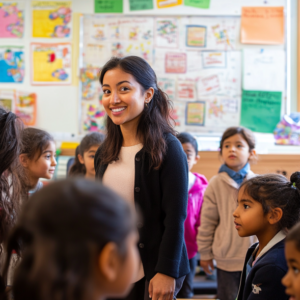Learn, Enjoy, Grow.
Make the Classroom an Adventure
We are here to help you create a classroom that not only educates but also inspires.


About Us
Say Hello to Our Classroom!
Hello and welcome to 1AClassroom.com! My name is Marissa, and I’ll be accompanying you throughout this blog. This space is designed to inspire and support educators, parents, and anyone interested in creating a classroom with a rich and effective learning environment. You will find a variety of topics that will help you improve and personalize your classroom, from educational methodologies to thematic decorations and teaching tips.
Everything for You
Discover Our Posts

“The greatest sign of success for a teacher is to be able to say: the children are now working as if I did not exist.”
Educator and Physician
Artificial Intelligence
AI has become a transformative force across multiple sectors, and education is no exception. At 1AClassroom.com, you will discover how these technologies can revolutionize the way we teach and learn, offering personalized adaptations, instant corrections, and interactive experiences that go beyond the physical classroom. From simplifying text reading to creating tailored study programs based on individual paces, artificial intelligence is here to enhance the experience for both students and teachers. Now is the time to harness its benefits responsibly, without losing the charm of human interaction and the creative spirit that makes education truly unique.
1AClassroom.com
All this and much more at 1A Group









